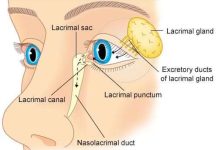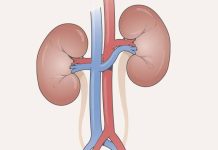The appendix is a worm-like organ whose function is shrouded in mystery and controversy. It diseases are a common cause of surgery and hospital admissions world-wide. The following science backed facts about this organ will help us know this organ more.
- Humans can lead a normal life without the organ. There is life without the appendix. It is not a vital organ.
- It is a vestigial organ. In humans has lost its function.
- The organ is also called vermix or vermiform process.
- It is located at the junction where the small intestine meets the large intestine.
- It reduces in size with age.
- Its length of the is about 7-9cm. It varies from person to person. The longest ever removed is 26cm.
- Its position in relation to the caecum varies from person to person. It is behind the caecum in 75% of the population.
- The function is unknown.
- Some scientists believe that it plays a significant role in the immune or defense system of the body.
- The lumen opens into the caecum. This lumen can be blocked causing appendicitis.
- The lumen is wider in children and obliterated in elderly.
- Sometimes, a person may have double or no appendix
- The appendix is usually located in the right lower quadrant of the abdomen.
- Some persons are born with the organ on the left side of the abdomen.
- A lone blood vessel supplies the organ.
- Embryologically, it is formed from the midgut
- The loss of function in man and retaining of function in lower animals gives credence to the evolution theory.
- Its location may change during pregnancy. It is pushed to the upper abdomen by the gravid uterus.
- Apart from man, it is also found in rodents (rabbits) and primates (gorillas).
- Its commonest disease is appendicitis
- Appendicitis is inflammation of the appendix.
- About 1 in 2000 persons develop appendix cancer
- Inflammation and blockage cause burst or ruptured appendix
- Appendicitis does not always result in appendix removal but it cannot be ignored.
- Burst appendix is a medical emergency.
- Appendicitis treatment is either with antibiotics or surgical removal. Surgery is the definitive treatment.
- Acute appendicitis is rare in the very young and the elderly.
- To prevent future infection, some surgeons can remove the healthy organ.
- The life time risk of appendicitis is 7% with males slightly more affected than females.
- Surgical removal of the appendix is appendectomy.
- Appendectomy is the commonest surgery world-wide
- Appendix pain is usually located around the umbilicus and ultimately moves to the right lower quadrant of the abdomen.
- Appendicitis tests carried out by the doctor are blood and urine tests plus high-resolution ultrasound scan.
- Open and laparoscopic appendectomy are available for appendix removal.
- Appendicitis can be acute or chronic. Chronic appendicitis is also known as grumbling appendix which describes a seasonal and periodical type of pains.
- In females, pelvic inflammatory disease, ectopic pregnancy, ovarian cyst, and mid-cycle pain may mimic appendicitis.
- Appendectomy recovery time depends on the clinical state of the patient and the type of surgery performed.
- The commonest side effects of its surgery are bleeding, fistula formulation and wound breakdown-complications of appendix removal.
- Laparoscopic surgery (expensive and minimally invasive) have a shorter recovery time than open surgery.
- Patients with burst organ have a longer recovery time.
- The length of an appendix surgery depends on the surgeon, the procedure used and the clinical state of the patient at presentation. Simple surgery can take just 30 minutes while complicated one like the burst type can take up to 6-8 hours.
- After surgery, the appendectomy recovery diet is usually oral sips, then light but balanced meal with loads of vitamins to aid wound healing.
- Appendix scar from appendectomy usually obliterates and becomes less obvious with time. Lanz incision during surgery gives a better appendix scar.
- Some persons experience pain weeks after appendectomy. Post- appendectomy pains are caused by wound infection, scar tissue formation, and scar stretching. For women, it may be from menstrual cramps. See your doctor if pains persist.
- There is less pain following laparoscopic appendectomy
- Having adequate rest, eating well, taking your prescribed medication, clean wound care, and easing gradually into normal life are the best and fastest appendectomy recovery tips.

READ ALSO: Causes of appendicitis
READ MORE AT WIKIPEDIA
RESOURCES: Principles and Practice of Surgery in the Tropics.























